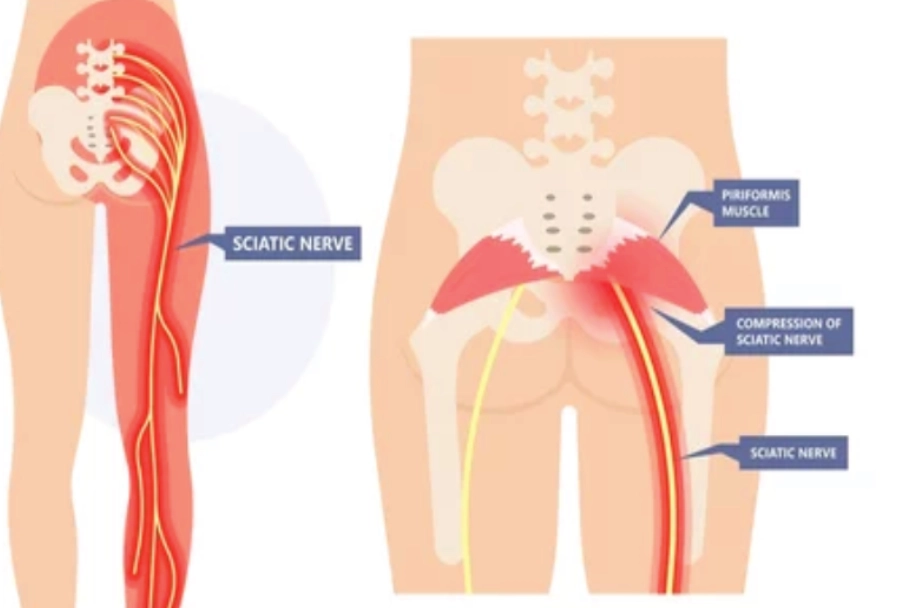Best Physiotherapy for Spondylitis spondylosis and spondylolisthesis Pain You Can Trust
Trust “Best Physiotherapy for Spondylitis spondylosis and spondylolisthesis Pain” for tailored rehabilitation, integrating evidence-based techniques to maximize recovery and restore independence. Our compassionate care and dedicated support aim to guide to our patients towards pain-free life, improved mobility and quality of life.
Best Spondylitis spondylosis and spondylolisthesis Pain physiotherapy Doctors in Delhi, India

Physiotherapy for Spondylitis, spondylosis, and spondylolisthesis Pain
Spondylitis, spondylosis, and spondylolisthesis Pain Physiotherapy in Delhi
Spondylitis, spondylosis, and spondylolisthesis are spinal conditions that affect different parts of the spine, causing pain and discomfort. Understanding their differences can help in effective management and treatment.
What is Spondylitis, spondylosis, and spondylolisthesis
SPONDYLITIS:
Spondylitis refers to inflammation of the vertebrae, typically involving the vertebral joints and surrounding tissues. It is commonly associated with conditions like ankylosing spondylitis, which is a type of arthritis affecting the spine. Ankylosing spondylitis causes chronic inflammation, leading to stiffness, pain, and eventually fusion of the spine. Other types of spondylitis may result from infections or other inflammatory diseases.
SPONDYLOSIS:
Spondylosis, also known as spinal osteoarthritis, is a degenerative condition that affects the spinal discs and facet joints. It results from wear and tear over time, leading to the breakdown of the spinal discs and the formation of bone spurs (osteophytes). Spondylosis commonly occurs with aging and can cause symptoms such as neck or back pain, stiffness, and reduced flexibility.
SPONDYLOLISTHESIS:
Spondylolisthesis is a condition characterized by the displacement of one vertebra over the one below it. This displacement can occur due to various reasons, including congenital abnormalities, such as defective vertebral arches, or degenerative changes in the spine. Spondylolisthesis may also result from traumatic injury or stress fractures in the vertebrae. Depending on the severity of the displacement, spondylolisthesis can cause symptoms like back pain, sciatica, and nerve compression.
What Causes Spondylitis, spondylosis, and spondylolisthesis
SPONDYLITIS:
Inflammation of the vertebrae is usually caused by conditions like ankylosing spondylitis, which is an autoimmune disorder. Other causes may include infections or other inflammatory diseases.
SPONDYLOSIS:
Spinal osteoarthritis, leading to the degeneration of spinal discs and facet joints, is the primary cause of spondylosis. Aging, injuries, and wear and tear over time contribute to its development.
SPONDYLOLISTHESIS:
This condition often results from congenital abnormalities, such as defective vertebral arches, or degenerative changes in the spine due to aging. Trauma or injury to the spine can also cause spondylolisthesis.
Physiotherapy Treatment for Spondylitis, spondylosis, and spondylolisthesis Pain
Physiotherapy plays a vital role in the management of all three conditions. It focuses on strengthening the muscles supporting the spine, improving flexibility and mobility, and reducing pain and inflammation. Physiotherapists may use techniques such as manual therapy, therapeutic exercises, and posture correction to address specific symptoms and improve overall spinal health.
Physiotherapy & Rehabilitation
Physiotherapy indeed plays a crucial role in managing spondylitis, spondylosis, and spondylolisthesis, aiming to alleviate pain, improve mobility, and enhance the overall quality of life for individuals affected by these conditions. Here's how physiotherapy can help in detail:
MANUAL THERAPY:
Physiotherapists often utilize manual therapy techniques to address pain and stiffness associated with these conditions. Techniques such as joint mobilization, soft tissue massage, and manipulation help improve joint mobility, reduce muscle tension, and alleviate discomfort.
THERAPEUTIC EXERCISES:
Specific exercises are prescribed to strengthen the muscles supporting the spine, including the core, back, and neck muscles. Strengthening these muscles helps stabilize the spine, improve posture, and reduce the risk of further injury. Additionally, stretching exercises are incorporated to enhance flexibility and range of motion, relieving stiffness and promoting better spinal alignment.
POSTURE CORRECTION:
Poor posture can exacerbate symptoms and contribute to spinal dysfunction. Physiotherapists provide education on maintaining proper posture during daily activities and ergonomic advice for workstations and home environments. Correcting posture helps alleviate strain on the spine, reduce pain, and prevent future complications.
PAIN MANAGEMENT:
Physiotherapy interventions aim to reduce pain and inflammation through modalities such as heat therapy, cold therapy, ultrasound, and electrical stimulation. These modalities help alleviate acute pain, improve blood circulation, and promote tissue healing, facilitating the recovery process.
EDUCATION AND SELF-MANAGEMENT:
Physiotherapists educate patients about their condition, including its causes, symptoms, and exacerbating factors. They provide guidance on self-management strategies, such as proper body mechanics, activity modification, and ergonomic adjustments, empowering patients to take an active role in their recovery and prevent recurrence of symptoms.
FUNCTIONAL REHABILITATION:
Functional exercises and activities are incorporated into the rehabilitation program to improve the patient's ability to perform daily tasks and activities without pain or discomfort. These exercises focus on functional movements, such as bending, lifting, and reaching, to enhance mobility, strength, and endurance.
Overall, physiotherapy plays a comprehensive role in the management of spondylitis, spondylosis, and spondylolisthesis by addressing pain, improving function, and promoting long-term spinal health. By providing individualized treatment plans tailored to each patient's needs, physiotherapists help individuals achieve optimal outcomes and maintain a higher quality of life despite these spinal conditions.
FAQs About Spondylitis, spondylosis, and spondylolisthesis
Can these conditions be prevented?
While some factors, like aging and genetics, are beyond control, maintaining a healthy lifestyle, practicing good posture, and avoiding activities that strain the spine can help reduce the risk of developing these conditions.
Are there any specific exercises recommended for these conditions?
Yes, physiotherapists often prescribe exercises tailored to each individual's condition and symptoms. These exercises aim to strengthen the core muscles, improve flexibility, and alleviate pain and stiffness.
How long does treatment typically last?
The duration of treatment varies depending on the severity of the condition and the individual's response to therapy. In most cases, a combination of treatments, including physiotherapy, medication, and lifestyle modifications, is needed for long-term management.
Our Treatment Process
Committed To Keep People Healthy & Safe
Our treatment process begins with a thorough assessment, followed by the creation of a personalized plan tailored to your needs. Through active rehabilitation, incorporating various evidence-based techniques, we work to promote healing and improve function. Continuous support and guidance are provided to ensure long-term success.
We start by having a thorough conversation with you about your medical history and any issues you’re experiencing. This helps us understand your unique situation.
We use state-of-the-art software and technology to analyze how your body moves and functions. This gives us a detailed picture of what might be causing your discomfort.
Based on what we find during the assessment, we create a personalized plan just for you. Our goal is to help you achieve specific outcomes, whether it’s reducing pain, improving mobility, or something else.
During your sessions with us, we use a combination of advanced technology and hands-on techniques to address your needs. This might include using special equipment or providing manual therapy to target problem areas.
We keep a close eye on how you’re doing throughout your treatment. By regularly checking your progress, we can make sure you’re on the right track and make any necessary adjustments to your plan.
Once you’ve made significant progress and reached your goals, we’ll guide you through a final session. Here, we’ll provide you with a customized digital exercise program that you can continue at home.
Even after your sessions with us are complete, we’re still here to support you. We offer virtual and online follow-up appointments to check in, answer any questions you may have, and provide ongoing guidance as needed.
At Best Physiotherapy Centre in Delhi We Follow Best Practices
Why Choose Us
We offer personalized care, crafting customized treatment plans based on your unique needs and goals. With expertise in physiotherapy and a holistic approach to healing, our team ensures comprehensive care that addresses both physical and emotional aspects of recovery.
- Personalized Care
- Experienced Professionals
- Expertise & Best Practices
- Holistic Approach
- Latest Technology
State-of-the-Art Facilities
Our facilities are equipped with the latest technology and amenities to create a conducive environment for rehabilitation and healing. From spacious therapy gyms to private treatment rooms, we prioritize comfort, safety, and accessibility for our patients.
EXPERTISE
Led by Dr. Dharam Pandey, our team comprises highly skilled professionals with extensive experience in stroke rehabilitation.
PERSONALIZED CARE
We believe in a patient-centered approach, tailoring treatment plans to address the individual needs and goals of each patient.
ADVANCED TECHNOLOGY
We harness the power of advanced technology to deliver innovative rehabilitation solutions and optimize outcomes.
COMPASSIONATE SUPPORT
We provide compassionate, supportive care every step of the way, empowering patients to achieve their full potential.
Best Physiotherapy Clinic In Delhi
At Dr. Dharam Pandey and Team, we are committed to redefining the standard of care in neurological rehabilitation. With our expertise, state-of-the-art technology, and unwavering dedication to patient-centric care, we strive to inspire hope, restore function, and improve quality of life for head injury survivors. If you or a loved one is seeking specialized rehabilitation services, we invite you to experience the difference at Dr. Dharam Pandey and Team.
Call Today
+91-9818911195 +91-9818910029









